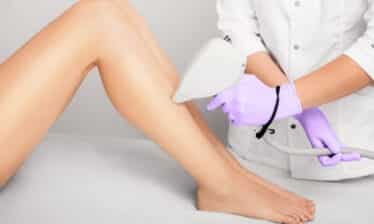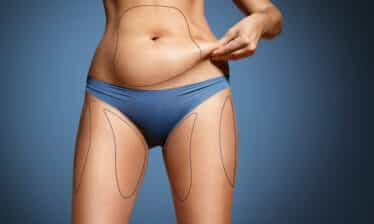Signs of aging can be hard to avoid. Thankfully there are many options to reverse the appearance of aging and preserve your youthful skin. A brow lift — or you might know it as a forehead lift or forehead rejuvenation — is one cosmetic procedure option that will help to refresh your appearance.
A brow lift procedure raises the brows, which tend to move down with age as the skin naturally loses some elasticity. You will notice an enhanced appearance in the skin around your eyes, brows, and forehead by lifting the brows. This might be a good option for you if you have uneven brows or notice that your brows have begun to droop or sag, and it will do wonders for your self-confidence.
You can expect a few things before and after a brow lift.
How Does a Brow Lift Work?
Brow lifts are typically completed in a hospital or outpatient surgical center setting, where you will be given medication to relax you or put you to sleep. This is accomplished with IV sedation or general anesthesia before surgery. The procedure can usually be completed in 1 to 2 hours. The technique that your surgeon uses will depend on your desired results.
There are several techniques that your surgeon might use:
Endoscopic brow lift
This procedure uses an endoscopic camera. The surgeon will make small incisions behind the hairline to insert the endoscope — a long thin tube with a light and a camera on the end — and look at the muscles and tissues beneath the skin. Different instruments will be inserted into the other incisions to lift the desired forehead tissue and suture it. Finally, the surgeon will close the incisions using stitches or clips for minimal scarring, which will be hidden by the hairline.
Temporal brow lift
Also known as a lateral brow lift, this procedure involves small incisions behind the hairline along the temples and will focus on correcting the outer one-third of the eyebrow.
Direct brow lift
This type of brow lift will be most useful for improving bushy eyebrows and is done by directly removing the skin above the eyebrows. Since it is a shorter surgery, you might only need local anesthesia.
Coronal brow lift
This type of brow lift will be most effective for people who do not have high hairlines or thin hair. It involves making an incision all along the hairline across the top of the head from ear to ear. The surgeon will then lift the forehead tissue and allow the scalp in front of the incision to overlap the scalp behind it before removing this overlapping section of the scalp. The surgeon will then stitch the incision closed.
Hairline brow lift
To enhance the appearance of a high or receding hairline, this procedure involves making an incision and removing skin and tissue from the top of the forehead. Because of the placement of the incision, a scar might be visible along the hairline.
What to Expect Before and After a Brow Lift
A brow lift is a fairly quick surgery but does require some preparation.
Preparing for surgery
You will speak to your plastic surgeon about expectations at a visit before the procedure. This will be a good time to cover your medical history, complete a physical exam, and be clear about your desired results. Your surgeon will then be able to determine the best procedure type for you.
You might be required to make some lifestyle changes before surgery. These might include:
- Stopping smoking before surgery and during recovery to increase blood flow to the skin and aid in a quicker recovery.
- Avoiding medications like aspirin, blood thinners, or anti-inflammatory drugs that increase the risk of bleeding.
It’s also a good idea to plan for help with recovery, especially for the drive home after surgery and during the first night.
After surgery
Depending on the procedure, you might return home with your forehead wrapped to help reduce swelling. Your surgeon might also place a tube at the incision to help drain excess blood or fluid.
You will be given instructions on caring for your incisions for the best recovery. These might include:
- Taking pain medication according to your provider’s recommendations
- Resting with your head elevated
- Relieving swelling with cold compresses
- Avoiding excessive pressure on your incisions
You might experience swelling for a few weeks. Bandages may be removed in one to three days, and stitches are usually removed after 7 to 10 days. Itching or numbness at the incision sites as they heal is common and will typically fade over time. The incisions may leave scars or bruising that will lighten. Your surgeon will let you know when you can resume your normal daily activities, including washing and drying your hair.
Serious side effects that will require immediate medical attention include:
- Sudden swelling
- Shortness of breath
- Chest pain
- Irregular heartbeats
Results
You can expect to see some results after healing. Once the swelling reduces, you should be able to see a noticeable difference in the soft tissue of your forehead and an enhanced, more youthful appearance to your skin.
While a brow lift does help to improve the effects of aging, the results are not permanent. Your skin will eventually begin to lose elasticity again as a normal result of aging.
Learn More About Brow Lifts
Brow lifts are standard cosmetic procedures that can help to restore your confidence and youthful skin. There are many types to choose from depending on the results you are hoping to achieve, and your plastic surgeon will be able to make the best recommendation for you.
Always speak with your doctor first if you think a brow lift procedure might be right for you.
My Body Treatment provides a resource about plastic surgery, fat reduction, muscle toning machines, and other body-related topics.





